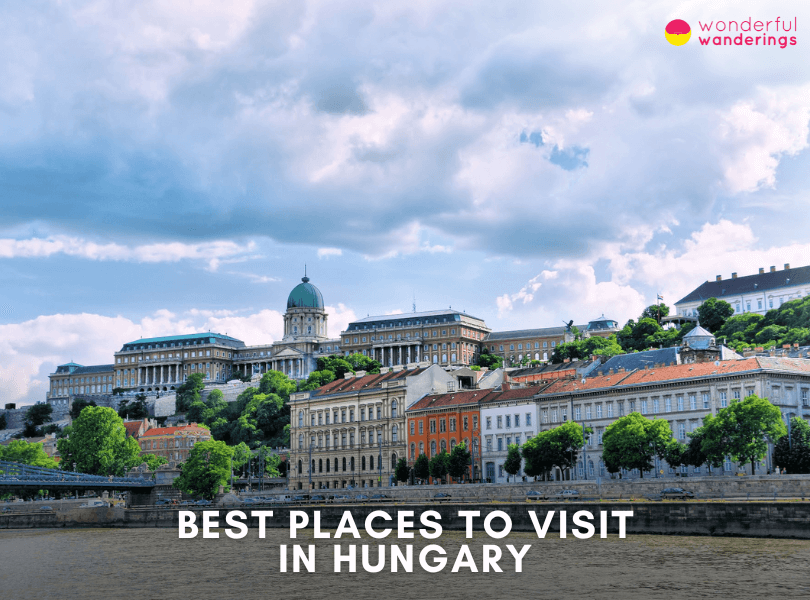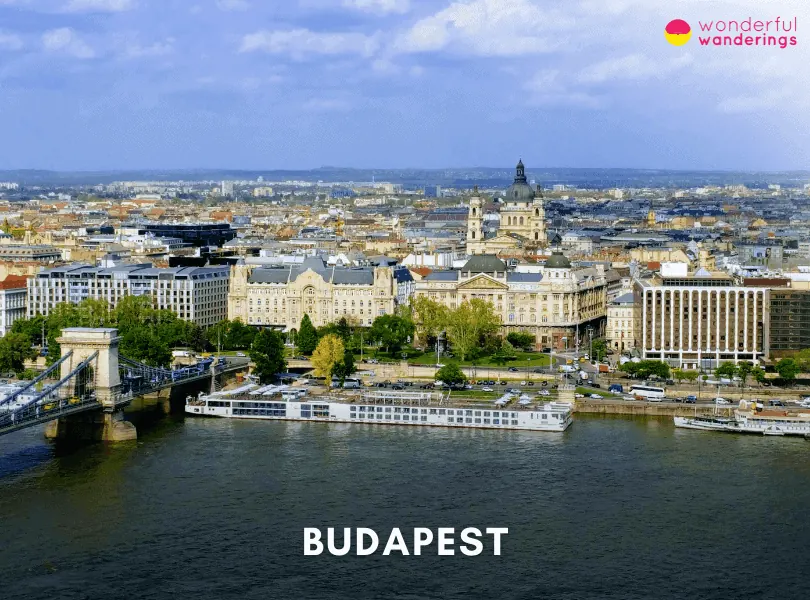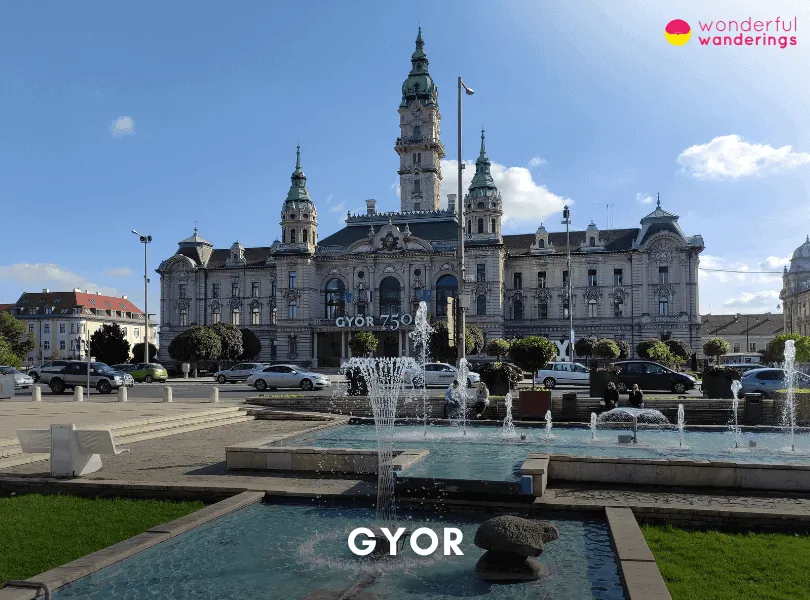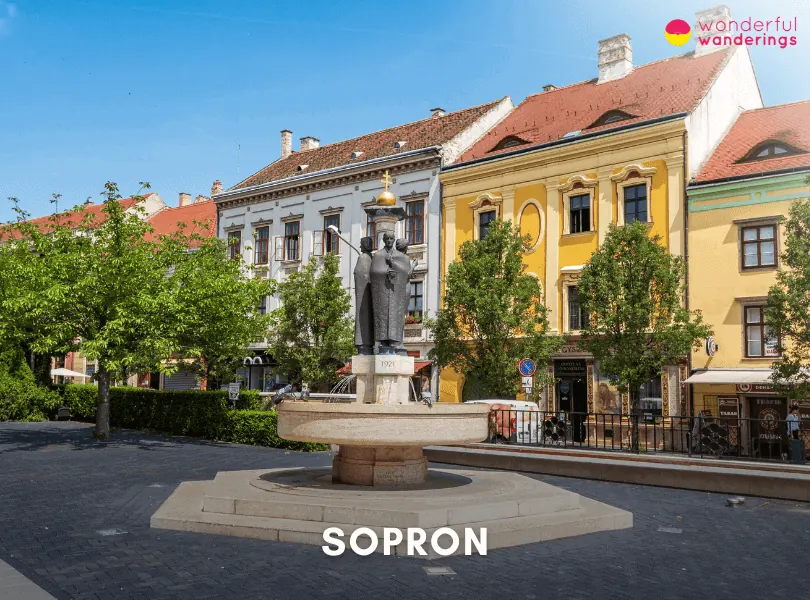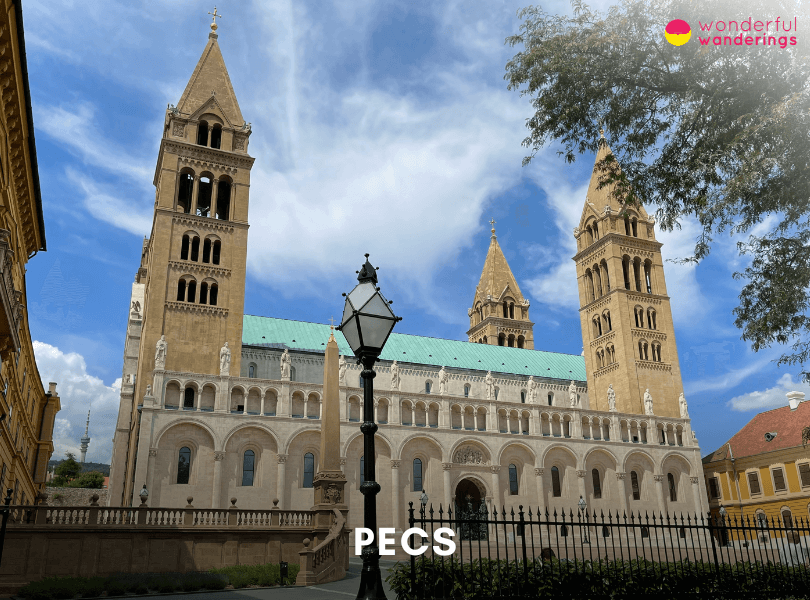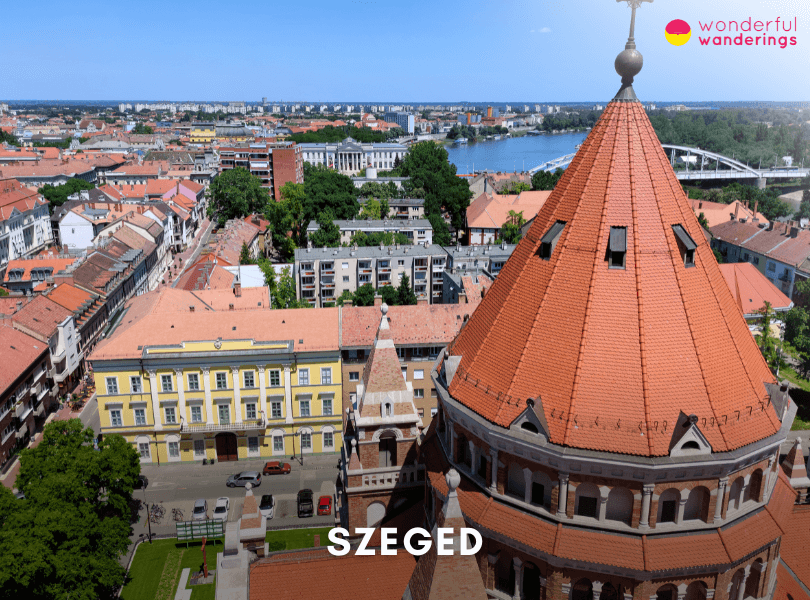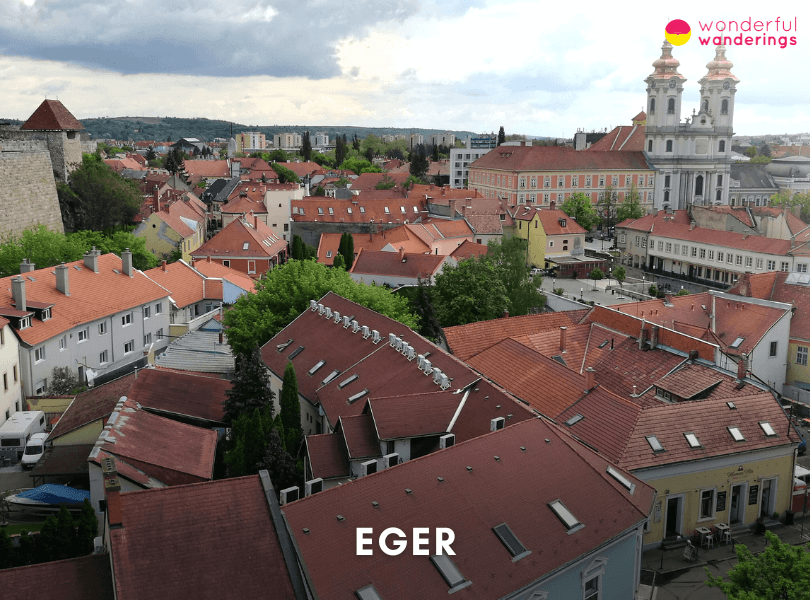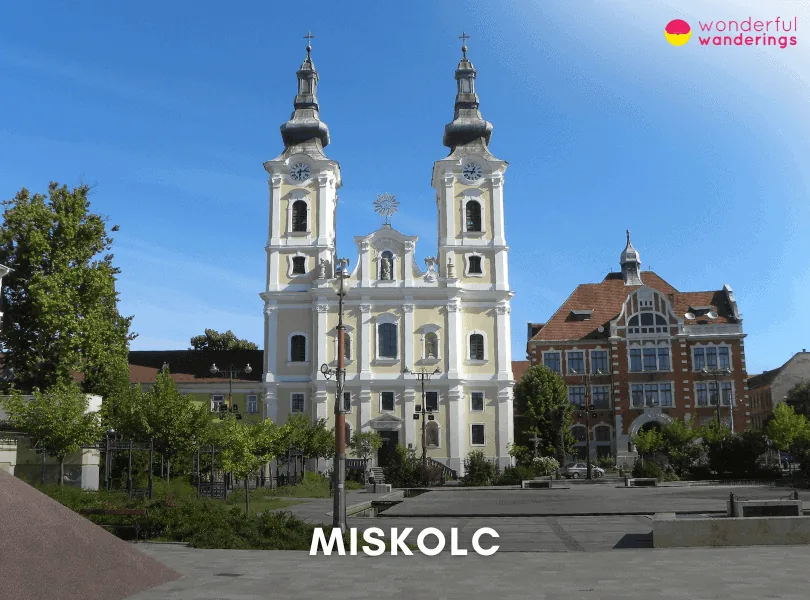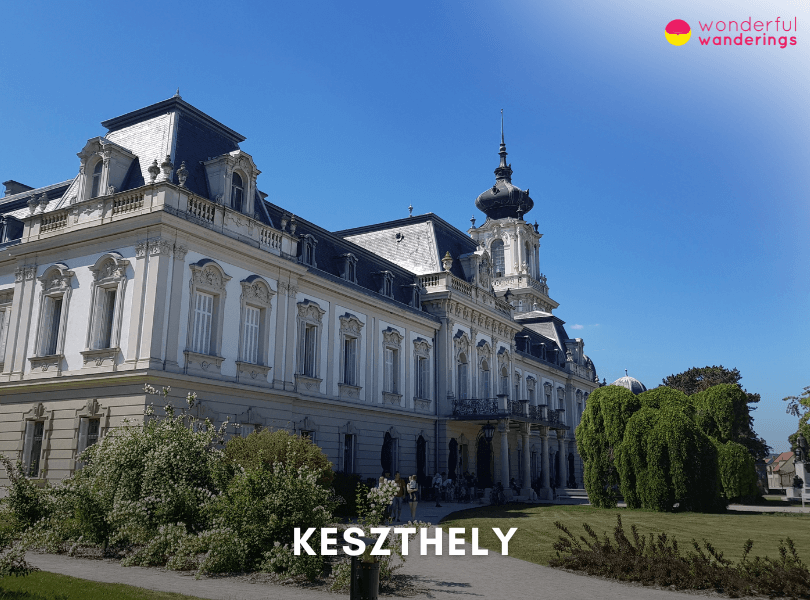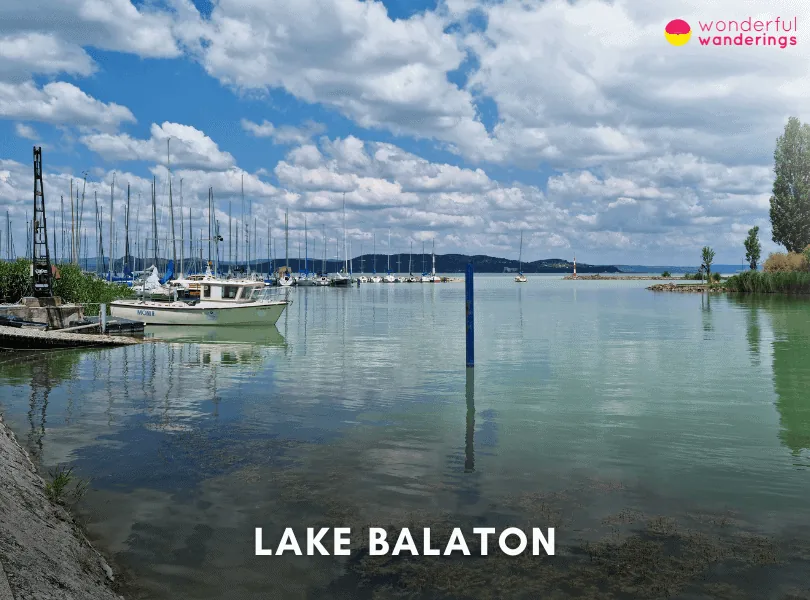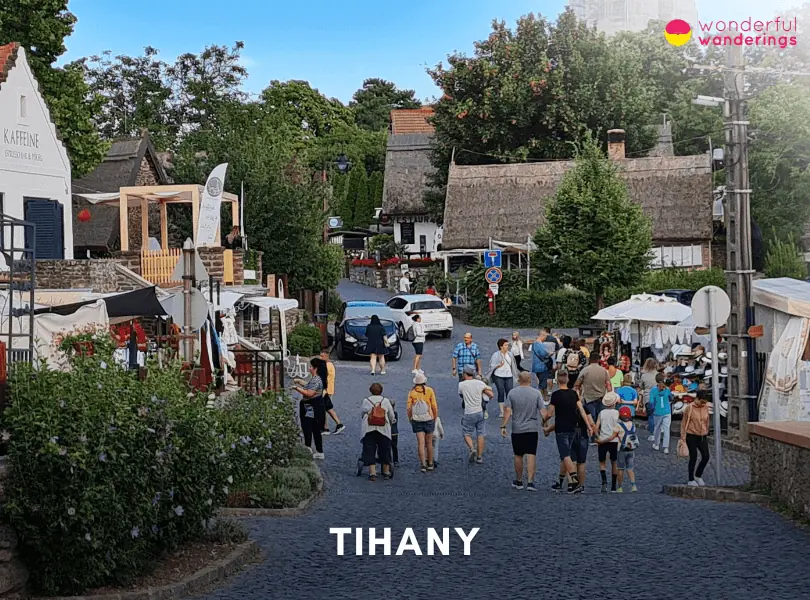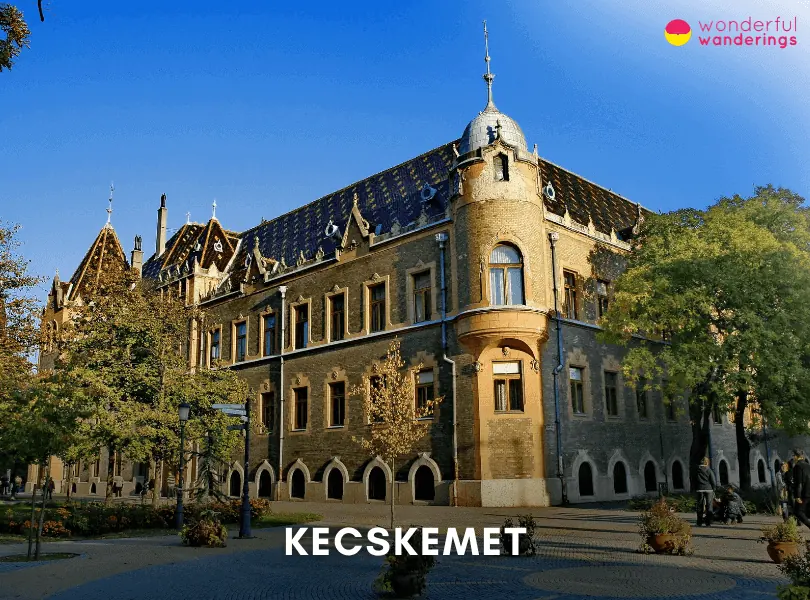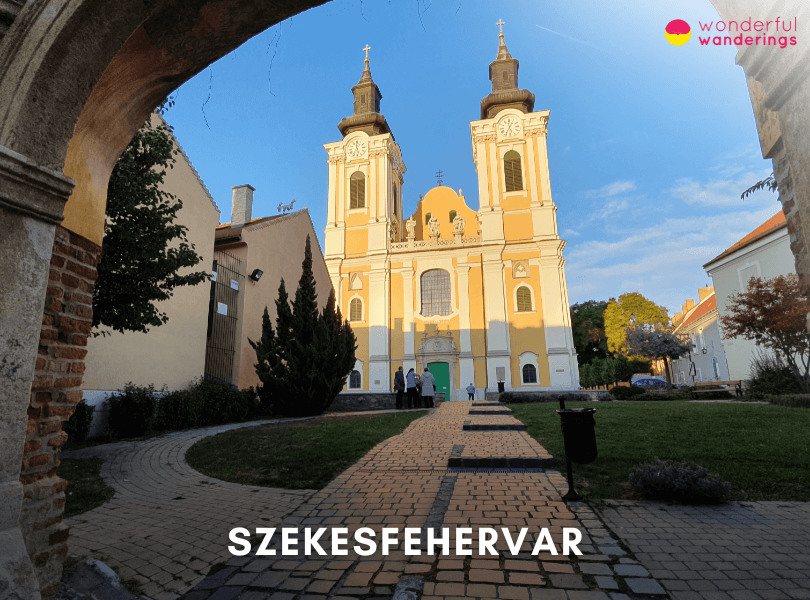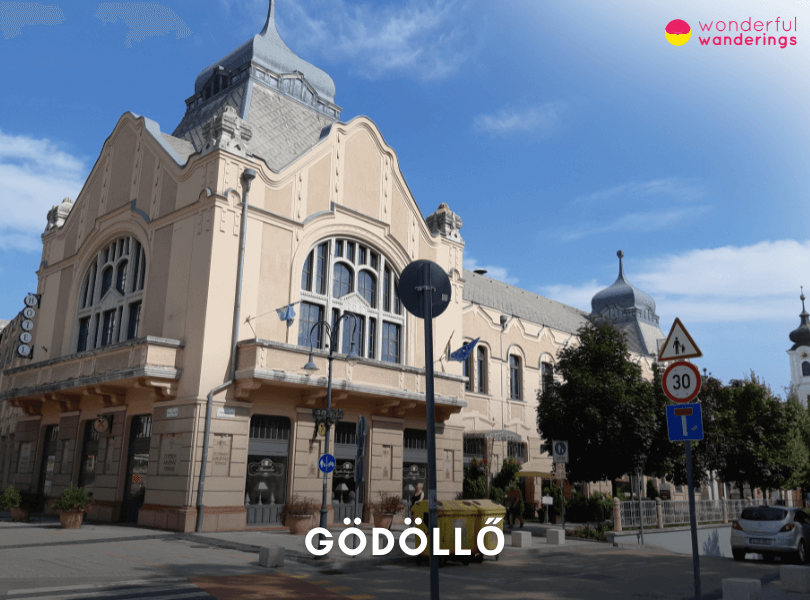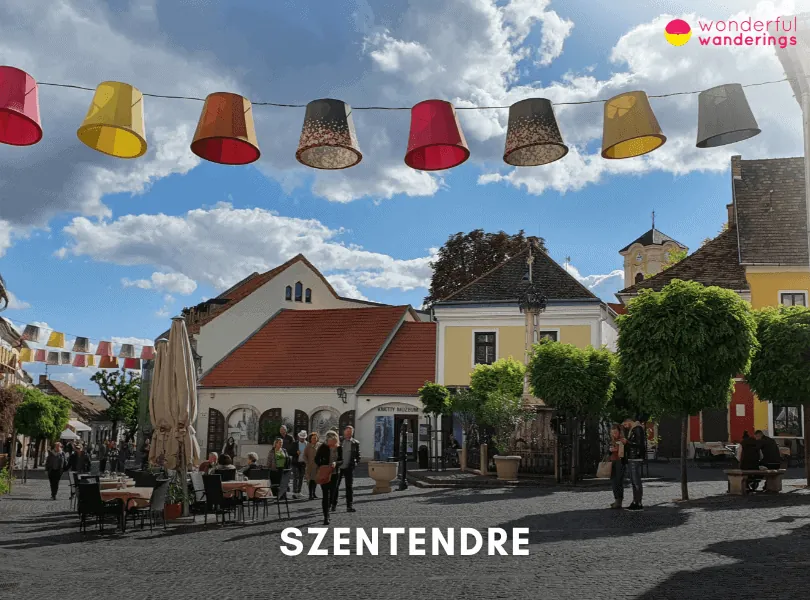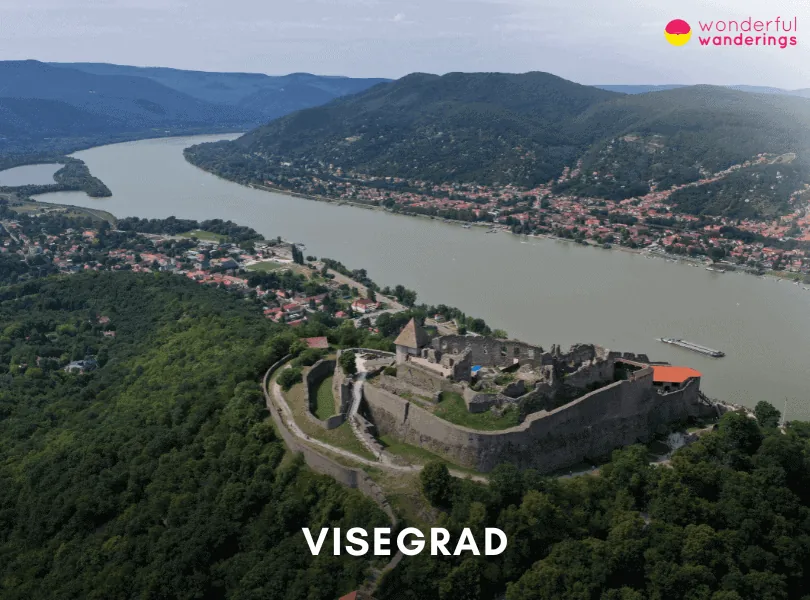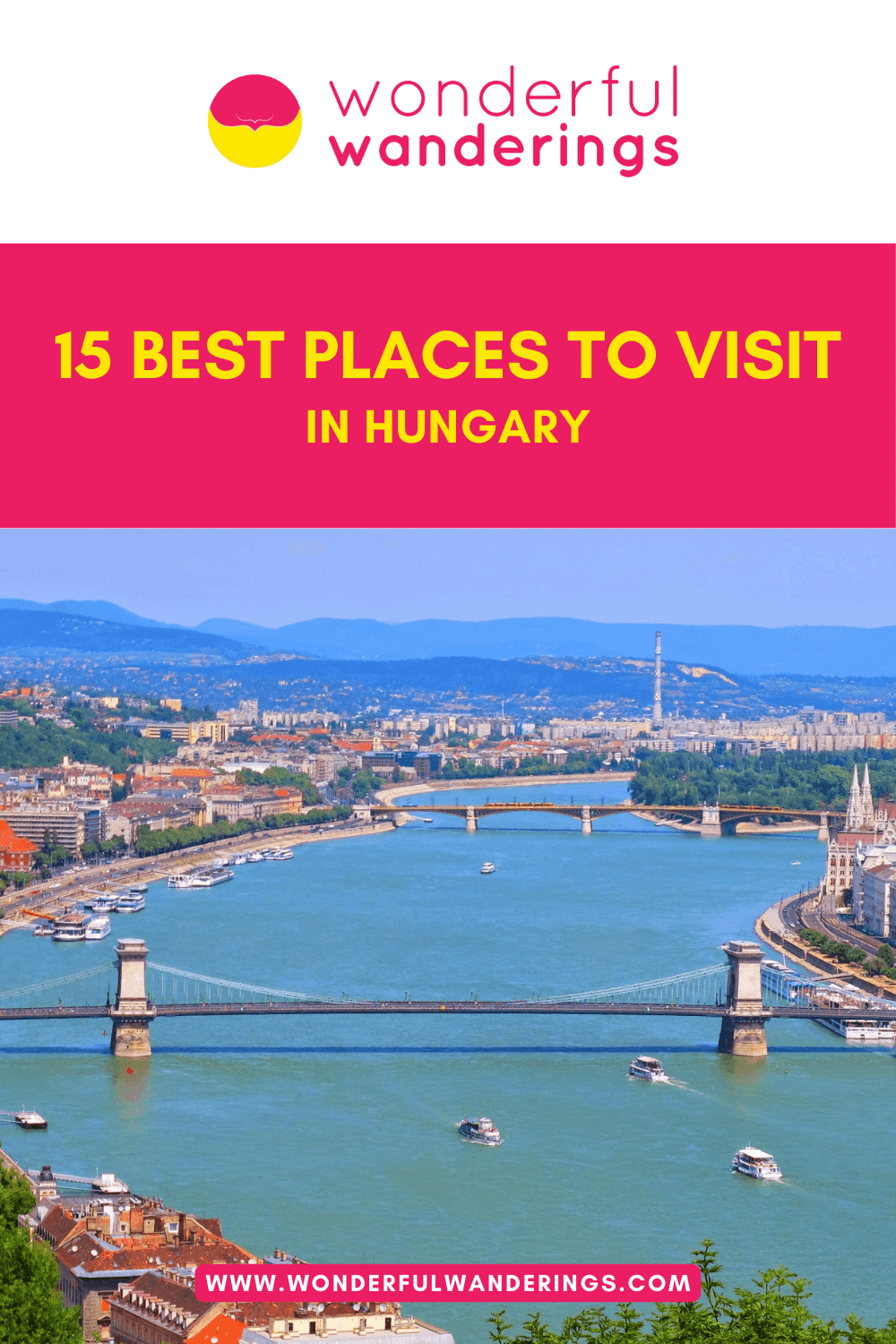Hungary is a landlocked country in Central Europe. It has a rich history and culture, dating back to the 9th century when it was founded by the Magyars, a nomadic people from the Ural Mountains. Hungary has a continental climate, with cold winters and warm summers. The average temperature in January is 0 °C (32 °F), while in July it is 22 °C (72 °F). The country receives 600 millimeters (24 inches) of rainfall annually, mostly in summer thunderstorms and snow in winter. Hungary is famous for its capital city, Budapest, which is divided by the Danube River into two parts: Buda and Pest. Budapest is home to many architectural and cultural attractions, such as the Buda Castle, the Hungarian Parliament Building, the Fisherman’s Bastion, the St. Stephen’s Basilica, and the Shoes on the Danube Bank memorial. Budapest is also known for its thermal baths, which are fed by natural hot springs and offer relaxation and healing. Some of the most popular baths are the Széchenyi, the Gellért, and the Rudas.
Hungary has more than just Budapest to offer. The country has many natural and historical sites to explore, such as Lake Balaton, the largest lake in Central Europe, where visitors can enjoy swimming, sailing, fishing, and hiking. The Tokaj wine region, where the famous Tokaji Aszú dessert wine is produced, is another attraction for wine lovers. The Hortobágy National Park, the largest protected area in Hungary, is a UNESCO World Heritage Site showcasing the Hungarian plain’s traditional pastoral life and wildlife. The Aggtelek National Park and Caves, also a UNESCO World Heritage Site, is a network of more than 700 caves, some of which are open to the public. Hungary is also a country of innovation and creativity. It has produced 13 Nobel Prize winners, mostly in physics, chemistry, medicine, and literature. Some of the most notable Hungarian inventors and scientists are Albert Szent-Györgyi, who discovered vitamin C; John von Neumann, who contributed to the development of the computer, and Ernő Rubik, who created the Rubik’s Cube. Hungary also has a rich musical and artistic heritage, with composers such as Franz Liszt, Béla Bartók, and Zoltán Kodály, and painters such as Mihály Munkácsy, László Moholy-Nagy, and Victor Vasarely.
1. Budapest
Budapest is Hungary’s capital and largest city, located on both sides of the Danube River. It is a popular destination for travelers exploring its rich history, culture, and architecture. Budapest’s coordinates are 47°29′33″N 19°03′05″E. Budapest has an international airport called Budapest Ferenc Liszt International Airport (BUD). It is 21 kilometers (13 miles) from the city center. The nearest capital city to Budapest is Bratislava, the capital of Slovakia. It is 200 kilometers (124 miles) away by road.
The best time to visit Budapest depends on preferences and interests. Some visitors, like warm weather and festivals, come between May and September when the city is lively and sunny; however, this is also the peak season for tourism, so expect higher prices and crowds. Visitors prefer to visit in March, April, October, or November when mild weather, fewer tourists, and the city is still beautiful and offers many outdoor activities. Budapest has a continental climate with four distinct seasons. The average temperature in January, the coldest month, is -1 ℃ (30 ℉), while the average temperature in July, the warmest month, is 21 ℃ (70 ℉). The city receives moderate rainfall throughout the year, with the wettest month being May and the driest month being February. Snowfall is possible from November to March but not very frequent or heavy.
Budapest has everything for visitors for all ages and interests. Some popular attractions include the Buda Castle, the Hungarian Parliament Building, the Chain Bridge, the Fisherman’s Bastion, the Heroes’ Square, and the St. Stephen’s Basilica. Visitors can also enjoy the city’s famous thermal baths, such as the Széchenyi Baths or the Gellért Baths, to relax and soak in the mineral-rich waters. For a more cultural experience, visit one of the city’s many museums, galleries, theaters, or concert halls, or join a guided tour to learn more about the city’s history and architecture. If searching for fun and nightlife, explore the city’s bars, clubs, and pubs, especially in the Jewish Quarter, and find the unique ruined bars converted from abandoned buildings.
2. Gyor
Gyor is a city in northwest Hungary at the confluence of three rivers: the Danube, the Rába, and the Rábca. It is the capital of Gyor-Moson-Sopron County and the Western Transdanubia region. Gyor is halfway between Budapest and Vienna, one of Hungary’s seven main regional centers. The city has a population of 130,000 people. The GPS coordinates of Gyor are 47°41′03″N 17°38′04″E. The nearest airport to Gyor is Gyor-Per International Airport (QGY), 15 kilometers (9 miles) southeast of the city center. The distance from Gyor to Budapest, the capital city of Hungary, is 122 kilometers (76 miles) by road. The best time to visit Gyor is spring and autumn. These seasons offer pleasant weather, colorful scenery, and fewer crowds. The average temperature in spring is 13 ℃ (55 ℉), and in autumn it is 11 ℃ (52 ℉). The summer months are hot and humid, with an average temperature of 21 ℃ (70 ℉). The winter months are cold and snowy, with an average temperature of 1 ℃ (34 ℉).
Gyor is a city with a rich history and culture dating back to the Roman times. The city has many historical monuments, especially in the Old Town area, where visitors can admire Baroque and Neoclassical architecture. Some of the most notable attractions in Gyor are the Cathedral Basilica of the Assumption of Our Lady, the Episcopal Castle and Palace, the St Ignatius of Loyola Benedictine Church, the Town Hall, and the Vienna Gate Square. Gyor is also a city with an arts and entertainment scene. The city hosts several festivals and events throughout the year, such as the Gyor Summer Festival, the Gyor Ballet Festival, the Gyor Philharmonic Orchestra, and the National Theatre of Gyor. The city also has many museums, galleries, and cultural institutions, such as the Janos Xantus Museum, the Margit Kovacs Ceramic Museum, the ETO Park, and the Zoo Gyor. Gyor is a city with a diverse and delicious cuisine influenced by the neighboring countries of Austria, Slovakia, and Croatia. The city offers a variety of restaurants, cafes, and pubs where visitors can taste the local specialties, such as the Gyor cake, the Gyor salami, the Gyor cheese, and the Gyor wine. The city also has a lively nightlife, with many bars, clubs, and discos, where visitors can enjoy the music and the atmosphere.
3. Sopron
Sopron is a city in Hungary on the Austrian border, near Lake Fertő (Lake Neusiedl). It has a rich history dating back to the Roman Empire when it was known as Scarbantia. Sopron is famous for its loyalty to Hungary, medieval architecture, and wine culture. The GPS coordinates of Sopron are 47°41′06″N 16°34′59″E. The city is 72 kilometers (45 miles) from the nearest airport, Vienna International Airport (VIE), and 217 kilometers (135 miles) from the capital city, Budapest. The best way to get to Sopron from these cities is by train or car. The best time to visit Sopron is from April to September when the weather is pleasant and the flowers bloom. The average temperature in this period is 18 ℃ (64 ℉), with highs of 27 ℃ (81 ℉) in July and lows of 10 ℃ (50 ℉) in April. The rainfall is moderate, with an average of 8 days of precipitation per month.
Sopron has many attractions for visitors, such as the Firewatch Tower, the city’s symbol, the Forum of Scarbantia, the remains of the ancient Roman city, and the Storno House, a museum of local history and art. Sopron also has several churches, such as the Gothic St. Michael’s Church, the Baroque Ursuline Church, and the Romanesque St. George’s Chapel. The most unique feature of Sopron is its wine culture, which dates back to the 13th century. Sopron is known for its red wines, especially the Kékfrankos (Blaufränkisch) variety, which has a spicy and fruity flavor. The wine is served in traditional taverns called Buschenschank or Poncichter, decorated with pine branches and offering local dishes such as goulash, dumplings, and cheese. Sopron is also a great base for exploring the surrounding natural beauty, such as Lake Fertő, the largest endorheic lake in Central Europe, which is a UNESCO World Heritage Site and a paradise for birdwatchers, cyclists, and hikers. The other option is to visit the nearby villages of Fertőrákos, Balf, and Nagycenk, which have historical and cultural attractions, such as the Pan-European Picnic Memorial Park, the Esterházy Castle, and the Széchenyi Museum.
4. Pecs
Pecs is the fifth largest city in Hungary. It is located on the slopes of the Mecsek mountains in the southwest of the country, close to its border with Croatia. It is the administrative and economic center of Baranya County and the seat of the Roman Catholic Diocese of Pecs. Pecs has a rich cultural heritage from the age of a 150-year Ottoman occupation and was named one of the European Capital of Culture cities in 2010. The Roman-era Christian necropolis in Pecs was inscribed as a World Heritage Site in 2000. The GPS coordinates of Pecs are 46.0734° N and 18.2331° E. The city is located in the Pecs District, in the Southern Transdanubia region of Hungary. The nearest airport to Pecs is the Pecs-Pogany International Airport (PEV), 10 kilometers (6 miles) from the city centre. The airport offers flights to and from Budapest, the capital city of Hungary, which is 203 kilometers (126 miles) away from Pecs by road. The best time to visit Pecs is between April and September, when the weather is most pleasant, and the city hosts many cultural events and festivals. The average temperature in Pecs ranges from 1.5 °C (34.7 °F) in January to 22.7 °C (72.9 °F) in July. The city receives moderate rainfall throughout the year, with May being the wettest month and April being the driest month. Pecs also experience some snowfall in winter, especially in February.
Pecs is a city of history, culture, and art, with many attractions to offer visitors. One of the main sights is the Pecs Cathedral, a Romanesque-Gothic-Renaissance-neo-Romanesque building that dates back to the 4th century and has four towers and a richly decorated interior. The other highlight is the Early Christian Mausoleum, a 4th-century tomb monument with marble sarcophagi and frescoes depicting biblical scenes. The Cella Septichora Visitors Centre displays another early-Christian chapel with seven apses and a burial chamber with more frescoes. Pecs is also famous for its ceramics produced at the Zsolnay factory. The factory was founded in 1853 and invented a special type of ceramic called pyrogranite, which is resistant to heat, frost and acid. The Zsolnay Museum showcases the history and products of the factory, including tiles, vases, sculptures, and architectural elements. Many buildings in Pecs are decorated with Zsolnay ceramics, such as the Synagogue, the National Theatre, the Hotel Palatinus, and the Jakovali Hassan Mosque. Pecs is a lively city with a diverse and multicultural population. The city has a large student community, home to the oldest university in Hungary, the University of Pecs, founded in 1367. The city also has a strong cultural scene, with several museums, galleries, theatres and cinemas. Some popular events in Pecs are the Spring Festival, the Zsolnay Festival, the Kodaly Music Festival, the Pecs Wine Festival, and the Pecs Beer Festival. Pecs is a city that offers something for everyone and is a great destination to explore in Hungary.
5. Szeged
Szeged is a city in Hungary located in the Southern Great Plain region. It is the third largest city and the county seat of Csongrád County. Szeged has a rich history, culture, and cuisine, and it is home to one of the most distinguished universities in Hungary, the University of Szeged. The GPS coordinates of Szeged are 46°15′18″N 20°08′42″E. The city lies on the banks of the Tisza River, near the borders with Serbia and Romania. Szeged has a temperate oceanic climate, with warm summers and cold winters. The nearest airport to Szeged is Arad International Airport (ARW) in Romania, which is 86.2 kilometers (53.6 miles) away. The closest airport in Hungary is Budapest Ferenc Liszt International Airport (BUD), 167 kilometers (104 miles) away. There are regular trains and buses that connect Szeged with Budapest and other major cities in Hungary and neighboring countries.
The distance from Szeged to Budapest, the capital city of Hungary, is 173.8 kilometers (108 miles) by car. The travel time is 1 hour and 40 minutes, depending on the traffic and the route. The fastest way to get from Szeged to Budapest is by train, which takes 2 hours and 25 minutes. The best time to visit Szeged is from April to October, when the weather is pleasant, and the city offers many cultural and outdoor activities. The average temperature in this period ranges from 12.6 ℃ (54.7 ℉) in April to 22.8 ℃ (73.0 ℉) in July. The rainfall is moderate, with the wettest month being May and the driest month being August. Some of the main attractions in Szeged are the Votive Church, the largest church in Hungary; the Dóm square, the venue of the Szeged Open Air Festival; the Szeged National Theatre, a neo-baroque building; the Móra Ferenc Museum, a museum of art and history; and the Szeged Zoo, one of the oldest zoos in Hungary. Szeged is famous for its paprika, fish soup, and Pick salami.
6. Eger
Eger is a city in northern Hungary and the county seat of Heves. It is the second largest city in the region, after Miskolc. Eger is best known for its castle, thermal baths, historic buildings, dishes, and red wines. It has a population of 56,000 as of 2011. The GPS coordinates of Eger are 47.9027° N, 20.3733° E. The city is located in the Eger Stream valley, a tributary of the Tisza River. Eger is surrounded by the Mátra and Bükk Mountains, part of the Inner Western Carpathians. The nearest airport to Eger is Budapest Ferenc Liszt International Airport (BUD), 98.5 kilometers (61.2 miles) away. The airport is connected to Eger by train and bus, which take two hours. The capital city of Hungary, Budapest, is 131.8 kilometers (81.9 miles) away from Eger by car. The driving time is 1 and a half hours.
The best time to visit Eger is from April to June or September to October. These months have pleasant weather, with average daily high temperatures ranging from 21°C (70°F) to 25°C (77°F). The rainfall is moderate, and the crowds are not too large. Eger has many events and activities during these months, such as the Spring Festival, the Wine Festival, and the Castle Days. Eger has many attractions for visitors, such as the Castle of Eger, a historic fortress that resisted the Ottoman siege in 1552. The castle has a museum, a gallery, and a panoramic view of the city. The other attraction is the Eger Basilica, the second-largest church in Hungary and a masterpiece of neoclassical architecture. The basilica has a rich interior, a library, and an organ. Eger is also famous for its wine culture, especially the red wine called Egri Bikavér, or Bull’s Blood. The wine is made from a blend of different grape varieties and has a spicy and fruity flavor. The wine is produced in the Eger wine region, with over 200 cellars and vineyards. Visitors can taste and buy the wine in the cellars or join a wine tour. Eger is a destination for wine lovers and history buffs alike.
7. Miskolc
Miskolc is a city in northeastern Hungary, located at the foot of the Bükk Mountains. It is the fourth largest city in the country and the regional center of Northern Hungary. Miskolc has a rich industrial and cultural heritage and natural attractions such as caves, waterfalls, and forests. The GPS coordinates of Miskolc are 48°06′15″N 20°47′30″E. The nearest airport to Miskolc is Košice International Airport (KSC) in Slovakia, which is 71.2 kilometers (44.3 miles) away. The distance from Miskolc to Budapest, the capital city of Hungary, is 183 kilometers (114 miles) by road. The travel time by car is 1 hour and 50 minutes, while the travel time by train is 2 hours and 15 minutes. The best time to visit Miskolc is from mid-May to mid-September, when the weather is warm and sunny, and the average temperature is 20 ℃ (68 ℉). This is also the peak season for tourism, as many festivals and events take place in the city and its surroundings. Some highlights include the Medieval Carnival at the Castle of Diósgyőr, the Meat-Jelly Festival, and the Cave Bath Festival.
The most popular attraction in Miskolc is the Cave Bath, a unique thermal spa in a natural cave system. The Cave Bath offers a relaxing and rejuvenating experience with mineral-rich thermal waters, saunas, and wellness facilities. The Cave Bath is open all year round, but it is especially enjoyable in the summer when the contrast between the cool cave and the warm water is refreshing. The other must-see attraction in Miskolc is the Castle of Diósgyőr, a medieval fortress once a summer residence of the Hungarian kings and queens. The castle has been restored to its original glory and features a museum, a chapel, a knight’s hall, and a waxworks exhibition. The castle also hosts various cultural events and exhibitions throughout the year, such as medieval reenactments, concerts, and workshops. A short distance from Miskolc is Lillafüred, a town in the Bükk National Park. Lillafüred is famous for its scenic landscape, which includes a lake, a waterfall, and a terraced garden. Lillafüred is also home to the Lillafüred Palace, a neo-Renaissance hotel that resembles a fairy-tale castle. Lillafüred is a great place to enjoy nature, hiking, biking, boating, and fishing.
8. Keszthely
Keszthely is a small town in western Hungary located on the shore of Lake Balaton. It is the largest city by the lake and one of the region’s most important cultural, educational, and economic hubs. Keszthely has a population of 21,000 people and covers an area of 75.32 square kilometers (29.08 square miles). The GPS coordinates of Keszthely are 46°46′11″N 17°14′53″E. The town is at the foot of the Keszthely Mountains, part of the Balaton Uplands National Park. The town has a mild continental climate, with warm summers and cold winters. The average annual temperature is 10.2 ℃ (50.4 ℉), and the average annual precipitation is 690 millimeters (27.2 inches). The nearest airport to Keszthely is Hévíz–Balaton Airport (SOB), which is 11.1 kilometers (6.9 miles) away. The airport offers seasonal flights to several European destinations, mainly catering to tourists visiting the thermal spas of Hévíz and Zalakaros. The airport also provides car rental and shuttle services to Keszthely and other nearby towns. The distance from Keszthely to Budapest, the capital city of Hungary, is 190.7 kilometers (118.5 miles) by car. The driving time is two hours, depending on the traffic and the route. The fastest route is via E71, which is a toll road. One can take a train or a bus from Keszthely to Budapest, which takes two and a half hours.
The best time to visit Keszthely is from April to September when the weather is pleasant, and the lake is suitable for swimming and other water activities. The peak season is in July and August, when the town hosts various festivals and events, such as the Balaton Wine Festival, the Keszthely Fest, and the Helikon Castle Days. This is also the most crowded and expensive time, so booking accommodation and transportation in advance is advisable. Keszthely has many attractions and activities for visitors of all ages and interests. The most famous landmark is the Festetics Palace, a baroque castle that was the residence of the Festetics family, one of the richest and most influential noble families in Hungary. The palace has a museum, a library, a park, and a coach museum. The other attractions include the Balaton Museum, which displays the history and culture of the lake and its surroundings, the Keszthely Kastell, a medieval fortress that offers panoramic views of the town and the lake, and the Kocsimuzeum Keszthely, a collection of carriages and coaches from different eras.
9. Lake Balaton
Lake Balaton is a freshwater rift lake in the Transdanubian region of Hungary. It is the largest lake in Central Europe and one of the region’s foremost tourist destinations. The Zala River provides the largest water inflow to the lake, and the canalized Sió is the only outflow. The coordinates of Lake Balaton are 46°51′00″N 17°43′12″E. The lake has a surface area of 600 square kilometers (230 square miles) and an average depth of 3.3 meters (11 feet). The maximum depth is 12.2 meters (40 feet). The lake is divided into two parts by a narrow strait, the Tihany Peninsula. The northern part is deeper and more mountainous, while the southern part is shallower and flatter. The nearest airport to Lake Balaton is Hévíz–Balaton Airport, located 1 kilometer (0.6 mile) south-southwest of the village of Sármellék, Zala County and Keszthely. The airport offers seasonal charter flights from Hungary and other European countries. The distance from the airport to the lake’s center is 25 kilometers (16 miles).
The capital city of Hungary, Budapest, is located 146 kilometers (91 miles) northeast of Lake Balaton. The driving time is 1 hour and 50 minutes, depending on the traffic and the route. The train journey takes 2 hours and 15 minutes, with frequent connections from Budapest-Keleti station to various towns along the lake shore. The best time to visit Lake Balaton is during the summer, especially July and August, when the temperatures are 25 ℃ (77 ℉) and the water is warm enough for swimming. Summer is also a good time to enjoy the Balaton Sound, one of Europe’s largest and most colorful open-air electronic beach festivals, beginning in July. Lake Balaton offers a variety of attractions and activities for visitors, such as sailing, windsurfing, fishing, hiking, cycling, horse riding, golf, and wine tasting. The lake is surrounded by towns and villages with its beauty and history. Some of the most popular places to visit are Balatonfüred, the oldest resort town on the lake, Tihany, a historic town with a Baroque abbey and a lavender field, Keszthely, the largest town on the lake with a beautiful castle and a museum, and Hévíz, a spa town with a thermal lake.
10. Tihany
Tihany is a village on the Tihany Peninsula, on the northern shore of Lake Balaton, in Hungary. It is a historical and cultural district famous for its natural beauty, lavender fields, and Benedictine abbey. Tihany has a long history dates back to the 11th century, when King Andrew I founded a Benedictine abbey here and was buried in its crypt. The abbey is the district’s center and the first place where the Hungarian language was recorded in writing. The current baroque church was built in the 18th century and offers a lake view. Visitors can also see art exhibitions and concerts in the abbey. The village of Tihany is a place with traditional houses, museums, and craft shops. The attraction is Echo Hill, where people can hear their voices bouncing back from the abbey walls. According to a legend, a cursed princess is trapped in the stones and has to answer every passerby, while another legend explains the origin of the goat nails, which are fossilized shells that wash ashore from the lake.
Tihany is also known for its lavender fields, which cover 100 hectares (247 acres) of land. The lavender was brought from France in the early 20th century and had a higher oil content than the original. The lavender blooms in June and July, creating a purple carpet and a fragrant aroma. There is a lavender festival every year, where visitors can buy lavender products, watch folk performances, and join the harvest. Besides the lavender fields, Tihany has other natural attractions, such as the Inner Lake and the Outer Lake. These are two small lakes within the peninsula, formed by volcanic activity. The Inner Lake is a popular fishing spot, while the Outer Lake is a nature reserve with rare plants and animals. There is also a butterfly valley, where hundreds of butterflies can be seen in the summer.
Tihany is easily accessible from Budapest, the capital city of Hungary, by car, bus, or train. The distance between the two places is 134 kilometers (83 miles). The nearest airport to Tihany is the Hévíz–Balaton Airport, 61 kilometers (38 miles) away. There are also ferry services that connect Tihany with other towns around Lake Balaton, such as Balatonfüred and Siófok. The best time to visit Tihany is from April to June when the weather is warm and pleasant and the lavender fields bloom. This is also the start of the peak season when many events and activities take place. The summer months of July and August are also popular but can be very hot and crowded. The autumn months of September and October are less busy but still offer mild temperatures and beautiful colors. The winter months of November to March are cold and snowy, and many attractions are closed.
11. Kecskemet
Kecskemét is a city in central Hungary and the county seat of Bács-Kiskun. It lies halfway between Budapest and Szeged and has a population of 110,000. Kecskemét is known for its cultural heritage, fruit production, and thermal baths. The GPS coordinates of Kecskemét are 46.9062° N, 19.6913° E. The city is on a flat sandy plain, surrounded by orchards and vineyards. Kecskemét has a temperate oceanic climate, with warm summers and cold winters.
The nearest airport to Kecskemét is Budapest Ferenc Liszt International Airport, which is 98 kilometers (61 miles) away. The airport offers flights to many domestic and international destinations and can be reached by train, bus, or taxi from Kecskemét. The capital city of Budapest is 98 kilometers (61 miles) away and can be visited by train, bus, or car. The best time to visit Kecskemét is from April to October when the weather is pleasant, and the city hosts many festivals and events. Some highlights include the International Kodály Music Festival in April, the Kecskemét Animation Film Festival in June, and the Kecskemét Wine Festival in September.
Kecskemét has many visitor attractions, such as the Town Hall, the Cifra Palace, the Hungarian National Gallery, and the Kecskemét Zoo. The city also has several museums, churches, and parks to explore. Kecskemét is famous for its apricot brandy, called barackpálinka, which can be tasted at the Zwack Kecskeméti Pálinka Manufaktúra. Kecskemét is a great destination for those who want to experience the Hungarian culture, cuisine, and nature. The city offers a variety of activities, from relaxing in the thermal baths to enjoying the music and art, to discovering the local history and traditions.
12. Szekesfehervar
Szekesfehervar is a city in central Hungary and the ninth-largest city in the country. It is the regional capital of Central Transdanubia and the center of Fejer County and Szekesfehervar District. The city has a long and rich history, dating back to the 10th century when it was the capital of the Kingdom of Hungary. Many Hungarian kings were crowned and buried in the city, a major cultural and economic center in the Middle Ages. The GPS coordinates of Szekesfehervar are 47°11′20″N 18°24′50″E. The city is located on the northeastern edge of the Bakony Mountains, 64 kilometers (40 miles) southwest of Budapest, the capital city of Hungary. The nearest airport to Szekesfehervar is Budapest Ferenc Liszt International Airport (BUD), 70 kilometers (43 miles) away.
The best time to visit Szekesfehervar is from April to October when the weather is mild and pleasant. The average temperature in this period ranges from 11 ℃ (52 ℉) in April to 22 ℃ (72 ℉) in July. The city receives moderate rainfall throughout the year, with the wettest months being May and June. The city also hosts several festivals and events in this period, such as the Spring Festival, the International Street Theatre Festival, and the Royal Days. Szekesfehervar offers a variety of attractions and activities for visitors, both historical and modern. The city has a well-preserved old town where one can admire the ruins of the medieval cathedral, the bishop’s palace, the town hall, and several churches and museums. The city also has a lively cultural scene, with theatres, galleries, and cinemas. Szekesfehervar’s most popular places are The King St. Stephen Museum, The Black Eagle Chemist’s Museum, The Hetedhet Toy Museum, The Bory Castle, and The Sostoi Stadium.
13. Gödöllő
Gödöllő is a town in Pest County, Hungary, 30 kilometers (19 miles) northeast of Budapest. It is part of the Budapest metropolitan area and has a population of 34,000 people. Its GPS coordinates are 47°36′0.00″N 19°22′0.12″E. The town is famous for its Royal Palace, the summer residence of Emperor Franz Joseph and his wife Elisabeth (Sisi) of Austria-Hungary. The palace is the second largest Baroque castle in the world and has a beautiful park named after Elisabeth. Visitors can admire the palace’s original furnishings, paintings, and exhibitions and enjoy concerts and festivals.
Gödöllő is also home to the Szent István University, the main agricultural university in Hungary. The university has a botanical garden, a museum, and a farm with animals. The town also has a House of Arts, where cultural events and exhibitions take place. The nearest airport to Gödöllő is Budapest Ferenc Liszt International Airport, which is 19.3 kilometers (12 miles) away. The town can be reached by car, bus, or train from Budapest. The travel time by car is 30 minutes, by bus is 40 minutes, and by train is 50 minutes.
The best time to visit Gödöllő is from April to June when the weather is mild and pleasant and the flowers bloom. The average temperature in April is 11 ℃ (52 ℉), in May is 16 ℃ (61 ℉), and in June is 20 ℃ (68 ℉). This is also when many events and activities take place in the town, such as the Spring Festival, the Sisi Days, and the International Harp Festival.
14. Szentendre
Szentendre is a small town in Pest County, Hungary, located on the bank of the Danube River. It is 20 kilometers (12 miles) from Budapest, the capital city of Hungary, and 49 kilometers (30 miles) from Ferihegy Airport, the country’s main international airport. The GPS coordinates of Szentendre are 47°40’10” N and 19°04’32” E. Szentendre has a rich history and culture, influenced by various ethnic groups that settled here over the centuries. The town is especially known for its Serbian heritage, as many Serbs fled here from the Ottoman Empire in the 17th and 18th centuries. They built several Orthodox churches and left their mark on the architecture and cuisine of Szentendre.
Szentendre is also a popular destination for art lovers, hosting many museums, galleries, and artists’ studios. Some of the most notable attractions include the Hungarian Open Air Museum, which displays traditional rural life and folk art, the Margit Kovács Museum, which showcases the ceramic works of a famous Hungarian artist, and the Szamos Marzipan Museum, which exhibits marzipan sculptures of various themes. Szentendre has a temperate climate, with warm summers and cold winters. The average temperature in July is 24 ℃ (75 ℉), while in January it is 0 ℃ (32 ℉). The best time to visit Szentendre is from April to October when the weather is pleasant, and the town is full of life and color. The town also hosts several festivals and events, such as the Easter Market, the Day of Serbian Culture, and the Szentendre Autumn Festival.
Szentendre offers a variety of options for accommodation, dining, and shopping. Visitors can choose from cozy hotels, guesthouses, and apartments or camp on the nearby island of Szentendre. There are many restaurants, cafés, and pubs that serve local and international dishes and Serbian specialties like pljeskavica and ćevapčići. The main shopping street of Szentendre is Bogdányi, where one can find souvenirs, handicrafts, and antiques.
15. Visegrad
Visegrad is a castle town in Pest County, Hungary. It is located in the scenic Danube Bend on the right bank of the Danube River. It has a population of 1,864 as of 2010. The geographic coordinates of Visegrad are 47.7852600° N and 18.9709000° E. The elevation above sea level is 110 meters (360 feet). The nearest airport to Visegrad is Budapest Ferenc Liszt International Airport (BUD), which is 44.3 kilometers (27.5 miles) away. The travel time by car is 42 minutes. The capital city of Hungary, Budapest, is 41.3 kilometers (25.7 miles) away from Visegrad. The travel time by car is also 42 minutesThe best time to visit Visegrad is from April to October when the weather is favorable, and the temperature ranges from 15 ℃ (59 ℉) to 30 ℃ (86 ℉). The rainiest months are May and June, so it is advisable to bring an umbrella.
Visegrad has many historical and cultural attractions to offer. The Royal Palace, the Citadel, and the Salomon Tower are the most famous. The Royal Palace was built by King Charles I of Hungary in the 14th century and later renovated by King Matthias Corvinus in the Renaissance style. The Citadel is a medieval fortress atop a hill, offering a panoramic view of the Danube Bend. The Salomon Tower is a 13th-century watchtower in the castle complex. Visegrad hosts various events and festivals, such as the International Palace Games, the Visegrad Four Film Festival, and the Visegrad Autumn. These events showcase Visegrad and the region’s rich cultural heritage and traditions. Visegrad is a popular destination for nature lovers and outdoor experts as well. The surrounding area offers hiking and biking trails, thermal baths, and spas. The Danube River also provides opportunities for water sports and cruises.
What is the best place to visit in Hungary during the summer?
The best place to visit in Hungary during the summer is Budapest. Firstly, Budapest has a diverse range of attractions catering to different interests. History lovers can explore the historic Buda Castle, which offers panoramic views of the city, or visit the iconic Hungarian Parliament Building, known for its neogothic architecture. Those interested in art and culture can explore numerous museums and galleries, such as the Museum of Fine Arts or the Hungarian National Gallery, which houses impressive collections of artwork. Secondly, Budapest is known for its thermal baths, making it an ideal destination for relaxation and rejuvenation. The city is home to several thermal baths, such as the Széchenyi Thermal Bath and Gellért Thermal Bath, where visitors can soak in the healing waters and enjoy various spa treatments. These baths offer a soothing escape from the busy city, allowing visitors to unwind and recharge. Lastly, Budapest comes alive during the summer with a lively social scene. The city hosts various festivals and events, including the Sziget Festival, one of Europe’s largest music festivals, and the Budapest Summer Festival, featuring open-air concerts and performances. The city’s lively nightlife offers a wide range of entertainment options, from trendy rooftop bars to underground ruin pubs, ensuring there is something for everyone to enjoy.
What is the best place to visit in Hungary during the winter?
The best place to visit in Hungary during the winter is the Eger. Firstly, Eger is known for its architecture and rich history. The town’s main attraction is the Eger Castle, a medieval fortress that offers panoramic views of the surrounding landscape. Visitors can explore the castle’s various chambers and learn about its role in Hungarian history. The town is home to the beautiful Basilica of Eger, an impressive example of Baroque architecture. Secondly, Eger is known for its wine production, making it an ideal destination for wine lovers. The region is famous for its red wine, especially the robust Bull’s Blood wine. Visitors can indulge in wine tastings and tours at the numerous wineries and wine cellars scattered throughout the town. Eger’s cozy wine bars and restaurants provide the perfect ambiance to savor local wines and traditional Hungarian cuisine. Lastly, Eger offers a range of winter activities for outdoor lovers. The Bükk National Park, located near the town, provides hiking, snowshoeing, and skiing opportunities. The park’s trails and snowy landscapes create a winter wonderland for nature lovers to explore. Visitors can enjoy ice skating on the frozen ponds and lakes, adding a touch of winter magic to their experience.
What is the best place to visit in Hungary during Christmas time?
The best place to visit in Hungary during Christmas time is Pécs. Firstly, Pécs is known for its rich cultural heritage and historical beauty. The city is home to numerous architectural gems, such as the Pécs Cathedral, which showcases magnificent Gothic and Romanesque elements. The Zsolnay Cultural Quarter’s unique art nouveau buildings and colorful ceramic decorations are another must-visit attraction. These landmarks are beautifully filled with lights and decorations during Christmas, creating a magical ambiance. Secondly, Pécs hosts a variety of traditional Christmas markets, where visitors can engage in the festive atmosphere and indulge in local delicacies. The main square, Széchenyi Square, transforms into a winter wonderland, with wooden stalls selling traditional crafts, gifts, and delicious Hungarian treats. The aromas of mulled wine and roasted chestnuts fill the air, adding to the cozy and joyful experience. Lastly, Pécs offers a range of cultural events and performances during the Christmas season. The Pécs National Theatre presents special holiday-themed shows, including ballets and theatrical performances, that captivate audiences of all ages. The city’s concert halls also host Christmas concerts featuring traditional Hungarian music and carols. These events allow one to participate in Hungary’s cultural traditions and festive spirit.
What are the Best Activities to do during the Summer in Hungary?
Listed below are the best activities to do during the summer in Hungary:
- Lake Balaton: Lake Balaton is a popular summer destination in Hungary through its crystal-clear waters and beautiful beaches. Visitors can swim, sail, or simply relax by the shore. The lake also offers various water sports activities like kayaking and paddleboarding.
- Budapest River Cruise: Exploring the Danube River on a river cruise in Budapest is a must-do activity during the summer. Travelers can enjoy breathtaking views of the city’s iconic landmarks, including the Hungarian Parliament Building and Buda Castle. Most river cruises also offer dinner and live music, creating a memorable experience.
- Thermal Baths: Hungary is famous for its thermal baths, and visiting one during the summer is a great way to relax and unwind. Budapest is home to several historic thermal baths, such as Széchenyi and Gellért, where visitors can soak in the healing waters and enjoy spa treatments. These baths provide a soothing escape from the summer heat.
- Wine Tasting in Tokaj: The Tokaj wine region is known for its sweet dessert wines. During the summer, visitors can explore the vineyards, learn about the winemaking process, and indulge in wine tastings. The region’s landscapes and wine cellars create a delightful setting for wine lovers.
- Festivals: Hungary hosts numerous festivals during the summer, offering a great cultural experience. The Sziget Festival in Budapest is one of Europe’s largest music festivals, featuring international artists and various genres. The other festivals, such as the Wine Festival in Budapest or the Gourmet Festival in Pécs, showcase the country’s culinary delights.
What are the Best Activities to do during the Winter in Hungary?
Listed below are the best activities to do during the winter in Hungary:
- Ice Skating: Ice skating is a popular activity during the winter in Hungary. Budapest offers several ice rinks, including the City Park Ice Rink, where visitors can glide on the ice surrounded by beautiful scenery.
- Christmas Markets: Exploring the traditional Christmas markets is a must-do activity during the winter season in Hungary. Budapest’s Christmas markets, such as the one in Vörösmarty Square, offer a festive atmosphere with stalls selling local crafts, food, and mulled wine.
- Thermal Baths: Hungary’s thermal baths are a great way to relax and warm up during the winter. Budapest’s Széchenyi and Gellért Baths provide soothing thermal waters, saunas, and spa treatments, creating a perfect escape from the cold.
- Skiing in the Buda Hills: The Buda Hills, located near Budapest, offer opportunities for skiing and snowboarding during the winter months. Normafa, one of the popular ski resorts, provides well-groomed slopes suitable for beginners and experienced skiers.
- Visiting Eger: Eger, a town in Hungary, is a delightful destination to visit during the winter. The town’s historical attractions, such as Eger Castle and the Basilica, take on a unique beauty with a dusting of snow. Visitors can also enjoy wine tastings and cozy up in traditional wine bars.
What is the best time to visit Hungary?
The best time to visit Hungary is from April to June and September to October. In spring, Hungary experiences mild temperatures ranging from 10°C (50°F) to 20°C (68°F), making outdoor activities and sightseeing pleasant. The city comes alive with blooming flowers, and the parks and gardens are delightful. Spring marks the beginning of the festival season in Hungary, with various cultural events and celebrations taking place. Autumn is another excellent time to visit Hungary. During this season, the temperatures start to cool down, ranging from 10°C (50°F) to 20°C (68°F), creating a comfortable and enjoyable climate for exploring the city. The autumn foliage paints the city in colors, providing a backdrop to the attractions. Autumn is the harvest season in Hungary, and it is a great time to indulge in local produce, wines, and traditional dishes.
What should you know before traveling to Hungary?
Listed below are what visitors should know before traveling to Hungary:
- Currency: The official currency of Hungary is the Hungarian Forint (HUF). Visitors should know the current exchange rate and have some local currency for small purchases and transactions.
- Language: Hungarian is the official language of Hungary. While English is widely spoken in tourist areas and major cities, it may be helpful for visitors to learn a few basic phrases or have a translation app handy to facilitate communication.
- Tipping: Tipping is customary in Hungary, and it is recommended to leave a 10 to 15% tip at restaurants, cafes and for good service in general.
- Public Transportation: Hungary has an efficient and well-connected public transportation in Hungary, including buses, trams, and metros. Visitors can easily navigate the cities using public transport, and purchasing a travel pass or card is advisable for convenience.
- Safety: Hungary is considered a safe country to visit, but it is always important for visitors to take common safety precautions, such as keeping valuables secure, being aware of their surroundings, and avoiding unlit or unfamiliar areas at night.
- Weather: Hungary experiences four seasons: hot summers and cold winters. Visitors should check the weather forecast before traveling and pack accordingly to ensure they are comfortable in the season.
- Dress Code: Hungarians often dress elegantly, especially in cities like Budapest. Visitors may want to adopt a smart-casual style when visiting restaurants, bars, or cultural attractions to blend in with the locals.
- Opening Hours: Most shops, restaurants, and attractions have limited opening hours on Sundays and public holidays in Hungary. Visitors should check the opening hours in advance to avoid any inconvenience.
- Visa Requirements: Visitors from certain countries may require a visa to enter Hungary. Checking the visa requirements and obtaining the necessary documentation before traveling is important.
- Cultural Etiquette: Hungarians value politeness and respect. It is customary to greet people with a handshake or a slight nod. Visitors should also use “please” (kérem) and “thank you” (köszönöm) in Hungarian when interacting with locals to show courtesy and appreciation.
What is the best local food to eat in Hungary?
Listed below are the best local foods to eat in Hungary:
- Gulyás: Gulyás, also known as Hungarian Goulash, is a popular traditional Hungarian dish. It is a hearty stew made with beef, onions, paprika, and various vegetables. Gulyás is typically a main course and is enjoyed for its rich flavors and comforting qualities.
- Lecsó: Lechó is a famous Hungarian food that is commonly enjoyed in Budapest. It is a simple and flavorful dish made from tomatoes, peppers, onions, and sometimes garlic. These ingredients are cooked together until they form a thick stew-like consistency. Lechó is typically served hot and can be enjoyed as a main course or a side dish.
- Korhelyleves: Korhelyleves, a famous Hungarian food, is a hearty soup traditionally consumed to ease the effects of a hangover. It is typically made with simple ingredients like sauerkraut, smoked meats (such as sausage or bacon), and potatoes. The soup is served hot in a bowl and often accompanied by a slice of crusty bread.
- Dobos Torta: Dobos Torta is a famous Hungarian dessert known for its layered structure and rich flavor. It comprises several thin sponge cake layers filled with rich chocolate buttercream and a caramel glaze. The cake is traditionally garnished with wedges of caramelized sugar, which add a crunchy texture to each slice.
- Kurtos Kalacs: Kurtos Kalacs, also known as Chimney Cake, is a famous Hungarian pastry popular for its distinctive shape and sweet flavor. It is made by wrapping a dough strip around a cylindrical spit and baking it over an open fire or in a specialized oven. As it bakes, the dough becomes golden and crispy on the outside while remaining soft and fluffy on the inside.
What are the facts about Hungary?
Listed below are the facts about Hungary:
- Hungary Has an Inner Sea: Hungary has an inner sea, which is a large freshwater lake called Lake Balaton. It covers 600 square meters (6458.4 square feet) and is the biggest lake in Central Europe. Most people call it the Hungarian Sea because of its size and beauty.
- Hungary Is an Ancient Wine Country: Hungary is an ancient wine country with a history of the Roman Empire. The rulers and nobles of Europe highly valued Hungarian wines, and Hungarian wine production thrived for centuries. Hungary has 22 official wine regions, each with its characteristics and specialties.
- Hungary and the King of Rock and Roll: Hungary and the King of Rock and Roll have a surprising connection. In 1957, Elvis Presley performed a song called Peace in the Valley on a TV show. The song was dedicated to the Hungarian people, who had just suffered a brutal Soviet invasion. Elvis wanted to show his support and sympathy for their struggle.
- Strap on Your Skis: Hungary has some ski resorts despite being landlocked and mostly flat. It often experiences significant snowfalls in winter, especially in the Northern Uplands. The country has 15 ski resorts with 35 kilometers (22 miles) of slopes.
- It Is Home to a Mummified King: Hungary preserves and venerates the right hand of its first king and patron saint, Stephen I. He was the last grand prince of the Hungarians and the first king of Hungary from 1000 or 1001 until he died in 1038. He was canonized in 1083, and his right hand was found to be intact and mummified when his body was exhumed.
How do travelers get around in Hungary?
Travelers get around in Hungary through trains, buses, trams, taxis, and rental cars. Firstly, Hungary has a well-developed railway network that connects major cities and towns across the country. Trains are popular for travelers due to their reliability, affordability, and extensive coverage. The train system in Hungary is known for its punctuality, making it an efficient way to travel between different destinations. Trains offer comfortable seating and amenities, ensuring a pleasant journey for passengers. Secondly, buses are another common mode of transportation in Hungary, especially for shorter distances and in rural areas where train services may be limited. The bus network is extensive, covering both urban and rural regions, making it convenient for travelers to reach various destinations. Buses are often a cost-effective option, with affordable fares and frequent departures. They also provide a chance to enjoy the scenic views of the Hungarian countryside while traveling. Thirdly, in cities like Budapest, trams are a popular and efficient way to navigate through urban areas. Trams offer a convenient mode of transportation, particularly for shorter distances within the city. They provide a reliable and frequent service, allowing travelers to explore different neighborhoods and attractions easily. Trams are also known for their affordability, making them a budget-friendly choice for getting around in Hungary’s cities. Fourthly, taxis are readily available in Hungary, especially in urban areas and tourist hotspots. Taxis offer convenience and flexibility, allowing travelers to reach their desired destinations at their own pace. Though taxis may be more expensive than other modes of transportation, they are a convenient option, particularly for those with heavy luggage or limited mobility. It is advisable to use licensed taxis and agree on the fare beforehand to avoid misunderstandings. Lastly, rental cars are a popular choice in Hungary for travelers who prefer more independence and flexibility. Renting a car allows visitors to explore the country at their own pace and access remote areas that may not be easily accessible by public transportation. Rental car services offer various vehicle options at major airports and cities. It is important to note that traffic regulations and parking can be challenging in some urban areas, so careful planning is advised.
Is a road trip a good idea to explore Hungary?
Yes, a road trip is a good idea to explore Hungary. Hungary has a diverse landscape, and a road trip allows travelers to experience its varied scenery. From the historic capital city of Budapest to the countryside and villages, a road trip offers the opportunity to visit different regions of Hungary. Traveling by road also provides flexibility and the chance to discover hidden gems off the beaten path. It allows visitors to stop at their leisure and explore lesser-known attractions.
Is driving in Hungary easy?
Yes, driving in Hungary is generally easy. The road infrastructure is well-developed, and the traffic is usually well-managed. Visitors will find the roads in good condition, making for a smooth and comfortable driving experience. The signage in Hungary is clear and easy to understand, making it simple for drivers to navigate the country. Road signs are typically in both Hungarian and English, which is helpful for international visitors. The road rules and regulations are similar to those in other European countries, so drivers familiar with driving in Europe will have no trouble adapting to the Hungarian road system.
Can travelers rent a car in Hungary?
Yes, travelers can rent a car in Hungary. Renting a car provides flexibility and convenience for exploring the country at one’s own pace. There are several car rental companies in Hungary, including both international and local providers, offering a range of vehicles to suit different preferences and budgets. Visitors usually need to meet certain requirements to rent a car in Hungary. These requirements may include being at least 21 or 25 years old, holding a valid driver’s license from their home country, and having a credit card for the rental deposit. It is advisable to check the specific requirements and conditions of the chosen car rental company before making a reservation. Car rental services are available at major airports, train stations, and city centers. Visitors can book a car in advance through the car rental company’s website or by contacting them directly. It is recommended to compare prices, read reviews, and choose a reputable car rental company to ensure a smooth rental experience. When picking up a rental car in Hungary, visitors must provide the necessary documents, such as their driver’s license, passport, and credit card. It is important to carefully inspect the vehicle for any existing damages before driving off. Visitors should also familiarize themselves with the local traffic rules and regulations to ensure a safe and enjoyable driving experience in Hungary.
What are the popular events and festivals in Hungary?
Listed below are the popular events and festivals in Hungary:
- Budapest Christmas Markets Festival: The Budapest Christmas Markets Festival is an annual event celebrating the festive season in Hungary’s capital city. The festival features various markets, attractions, and activities that showcase Hungary’s rich culture and traditions. The festival runs from mid-November to early January, with different dates for each market.
- Budapest Spring Festival: The Budapest Spring Festival is one of Hungary’s largest and most prestigious cultural events. It takes place every year in April, celebrating spring’s arrival with various artistic performances and exhibitions. The festival attracts both local and international audiences, who can enjoy opera, ballet, classical music, jazz, theater, and film.
- Sziget Festival: Sziget Festival is one of Europe’s largest and most popular music and arts festivals. It takes place every year in August on the Óbuda Island in Budapest, Hungary. The festival attracts hundreds of thousands of visitors worldwide, who enjoy a diverse lineup of artists, performers, and activities.
- Telekom Volt Festival: Telekom Volt Festival is a music and arts festival that takes place every year in Sopron, Hungary. The festival started in 1993 as a small student event and has grown into one of Central Europe’s largest and most popular festivals. The festival attracts more than 100,000 visitors each year, who enjoy a diverse lineup of local and international artists and various cultural and entertainment activities.
- Heineken Balaton Sound: Heineken Balaton Sound is one of Europe’s largest electronic beach festivals. It takes place every summer at Lake Balaton, the largest lake in Central Europe, in Zamárdi, Hungary. The festival attracts thousands of music lovers who enjoy the performances of world-famous DJs and artists on several stages.
Is it expensive to visit Hungary?
No, it is not expensive to visit Hungary. The prices in Hungary is relatively lower than in many Western capitals, making it an attractive choice for budget-conscious travelers. Basic goods such as milk, cigarettes, bottled water, and beer are priced 3€ ($3.27, £2.61) to 5€ ($5.45, £4.35), with local products often offering good value for money. Breakfast at local eateries or cafes is also affordable, making dining out an accessible option for visitors. The cost of traveling within Hungary, including public transportation and taxis, is also relatively economical, further enhancing its affordability. Hungary is known for its reasonable accommodation prices, with various options to suit different budgets. For those looking to enjoy a pint of beer, the cost is 5€ ($5.45, £4.35) to 15€ ($16.35, £13.05), with Hungary offering competitive prices compared to many other European cities.
Is it cheaper to visit Hungary during Christmas?
Yes, it is cheaper to visit Hungary during Christmas. Hungary offers various discounts and promotions during Christmas, making it an affordable time to visit. Most hotels and accommodations offer special rates and packages, saving travelers money on their stay. Christmas markets are a popular attraction in Hungary, and they often offer unique and affordable shopping opportunities for gifts and souvenirs. Dining out and trying local cuisine can be more affordable during this time, as restaurants may offer special Christmas menus or set meals at discounted prices. Public transportation costs in Hungary are relatively low, with a single ticket costing 1.5€ ($1.64, £1.31) and offering access to various attractions and landmarks. It is worth noting that prices may vary depending on the specific location and demand during the Christmas season. Popular tourist destinations and major cities may have higher prices than smaller towns. Planning and booking to secure the best deals and taking advantage of the cost-saving opportunities available during Christmas in Hungary is advisable.
What are the best Christmas markets in Hungary?
The best Christmas markets in Hungary are the busy Budapest Christmas Fair, the artistic Szentendre Christmas Market, the lively Debrecen Advent Fair, the cozy Veszprém Christmas Market, and the cultural Pécs Advent Market. Firstly, the Budapest Christmas Fair and Winter Festival is one of the most known markets in Hungary. The market offers a variety of handcrafted gifts, from traditional Hungarian embroidery to intricately carved wooden toys. Visitors can also enjoy a wide selection of mouth-watering treats, such as chimney cake and mulled wine. Secondly, the Szentendre Christmas Market is another popular choice in Hungary. It is in Szentendre, just a short distance from Budapest, and this market showcases the region’s rich artistic heritage. Visitors can explore stalls with unique artworks, including paintings, ceramics, and textiles. Traditional Hungarian cuisine, including hearty stews and pastries, can be savored while wandering through the market. Thirdly, the Debrecen Advent Fair is a must-visit market in eastern Hungary. As the second-largest city in the country, Debrecen hosts a Christmas market that attracts thousands of visitors each year. The market offers various handmade crafts, including pottery, glassware, and leather goods. Visitors can also indulge in traditional Hungarian delicacies like goulash and strudel. Fourthly, the Veszprém Christmas Market is a hidden gem in western Hungary. The market shows a cozy and intimate atmosphere. Visitors can browse stalls selling handmade jewelry, textiles, and wooden crafts. Local vendors offer a variety of delicious regional specialties, including honey products and artisanal cheeses. Lastly, the Pécs Advent Market is a festive highlight in southern Hungary. This market, held in the city of Pécs, showcases the region’s rich cultural heritage. Visitors can explore stalls selling traditional Hungarian folk art, including pottery, embroidery, and lacework. Delicious local cuisine, such as stuffed cabbage and chimney cake, can be enjoyed while soaking in the festive atmosphere.

